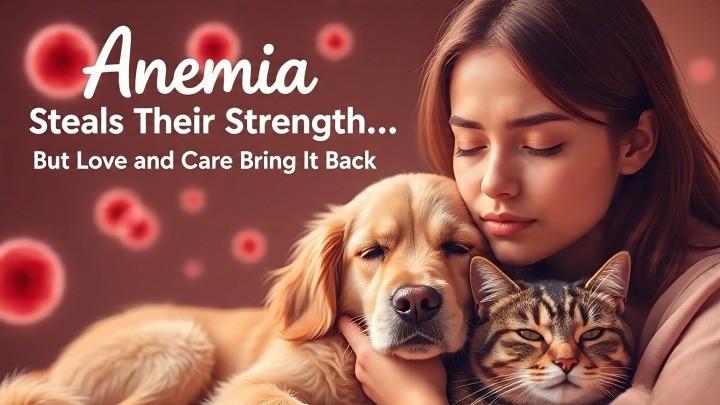“Anemia is a challenge, but with care and courage, pets can rise stronger than ever.”
Table of Contents
Introduction

Anemia in dogs and cats is more than just lethargy, it’s a serious health threat. If a dog or cat suffers from anemia and is weak, their body does not have the healthy red blood cells to carry blood and oxygen to their body. This stress on the organs can weaken the animal, make them sick, and possibly kill them if veterinarian care is not sought. Learning about anemia is the first step in keeping your pet safe and healthy.
What is Anemia in Dogs and Cats?

Anemia is when your pet has a decreased level of red blood cells or hemoglobin. Red blood cells carry oxygen, so if the number of red blood cells is dropping, it is also going to carry less oxygen to the tissues. Anemia specifically in dogs and cats is the loss of red blood cells and hemoglobin. Hemoglobin is the protein inside of red blood cells that carries oxygen in blood. If the packed cell volume (PCV) is decreased below normal (normal amounts are about 35-55% in dogs and 25-45% in cats) tissues will receive less oxygen.
Types Of Anemia
- Regenerative anemia: The body tries to make new red blood cells (common with blood loss or parasites).
- Non-regenerative anemia: The body cannot produce enough new cells (common with chronic disease or bone marrow issues).
| Aspect | Regenerative Anemia | Non-Regenerative Anemia | Examples |
|---|---|---|---|
| What It Is | Body makes new red blood cells (RBCs) fast; high reticulocytes (>60K/μL dogs, >50K/μL cats). | Body can’t make enough RBCs; low reticulocytes. | Regenerative: Dog with fleas. Non-Regenerative: Cat with kidney disease. |
| Causes | Blood loss (cuts, parasites) or hemolysis (toxins, infections). | Chronic issues (kidney/liver failure, cancer). | Regenerative: Cat eats onions. Non-Regenerative: Dog with leukemia. |
| Marrow Response | Strong; marrow pumps out RBCs. | Weak; marrow fails to respond. | Regenerative: Puppy with worms has new RBCs. Non-Regenerative: Old cat lacks RBC production. |
| Diagnosis | CBC shows high reticulocytes; smears show young RBCs. | CBC shows low reticulocytes; may need marrow test. | Regenerative: Tick infection in cat. Non-Regenerative: Cancer in dog’s marrow. |
| Symptoms | Pale gums, tiredness; often quick to fix. | Chronic weakness, ongoing issues. | Regenerative: Dog panting from blood loss. Non-Regenerative: Cat tired from kidney failure. |
| Treatment | Fix cause (stop bleeding, treat infection); transfusions. | Manage disease (kidney support); supplements. | Regenerative: Steroids for dog’s hemolysis. Non-Regenerative: Hormone shots for cat. |
| Outlook | Good if cause treated; fast recovery. | Tougher; depends on disease control. | Regenerative: Kitten recovers from fleas. Non-Regenerative: Dog’s cancer persists. |
6 Major Causes of Anemia in Dogs and Cats

1. Blood Loss Anemia
- Injuries, surgery, or internal bleeding (ulcers, tumors).
- Severe flea or tick infestations can drain blood.
2. Hemolytic Anemia
- The immune system destroys red blood cells (immune-mediated hemolytic anemia).
- Caused by infections, toxins, or certain drugs.
3. Nutritional Deficiencies
- Lack of iron, vitamin B12, or folic acid in the diet.
- More common in pets fed unbalanced homemade diets.
4. Chronic Diseases
- Kidney failure (reduced red blood cell production).
- Liver disease and certain cancers.
5. Infections and Parasites
- Tick-borne diseases like Ehrlichia and Babesia.
- Hookworms and fleas causing blood loss.
6. Toxins and Medications
- Onion, garlic, rat poison, and some medications can trigger anemia.
Symptoms of Anemia in Dogs And Cats
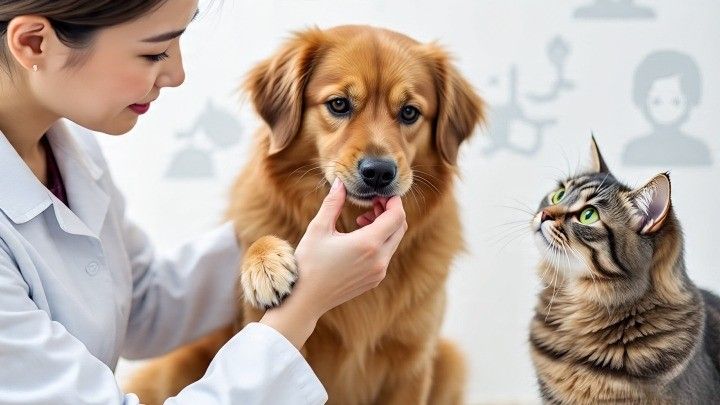
| Type of Symptom | Signs in Dogs & Cats | Brief Explanation |
|---|---|---|
| Physical Appearance | Pale gums, pale tongue, pale inner eyelids | Red blood cells are low, so mucous membranes lose their normal pink color. |
| Energy & Activity Level | Lethargy, weakness, reluctance to play or move | Lack of oxygen in tissues makes pets tired and less active. |
| Appetite & Weight | Loss of appetite, gradual weight loss | Anemic pets often feel unwell and refuse to eat, leading to weight drop. |
| Respiratory Signs | Rapid breathing, panting, shortness of breath | The body tries to compensate for low oxygen by breathing faster. |
| Circulatory Signs | Rapid heartbeat, weak pulse | The heart works harder to pump limited red blood cells through the body. |
| Severe or Advanced Signs | Collapse, fainting, inability to stand | In critical cases, oxygen delivery to the brain and muscles is very poor. |
| Jaundice (yellowing) | Yellowish eyes, gums, or skin | Seen in hemolytic anemia when red blood cells break down too quickly. |
| Behavioral Changes | Restlessness, irritability, sleeping more than usual | Low oxygen can cause mood changes and unusual behavior. |
| Gastrointestinal Signs | Vomiting, dark or bloody stools | May indicate internal bleeding as a cause of anemia. |
| Temperature Regulation | Cold ears and paws, intolerance to exercise | Poor circulation from low red blood cells reduces body warmth. |
Breeds and Risk Factors for Anemia in Dogs and Cats

| Species | Breeds More Prone to Anemia | Key Risk Factors | Estimated Risk (%) |
|---|---|---|---|
| Dogs | Cocker Spaniel | Immune-mediated hemolytic anemia (IMHA) common | 20–25% higher risk vs average dogs |
| Miniature Poodle | Autoimmune diseases, genetic predisposition | 15–20% higher risk | |
| Shih Tzu | Genetic and autoimmune-related anemia | 15% higher risk | |
| Labrador Retriever | Tick-borne diseases, obesity-related illness | 10–15% higher risk | |
| German Shepherd | Ehrlichia and Babesia (tick-borne anemia) | 12–18% higher risk | |
| Cats | Abyssinian | Genetic red blood cell fragility (PK deficiency) | 25–30% higher risk |
| Somali | Related to Abyssinian, prone to hereditary anemia | 20–25% higher risk | |
| Siamese | Susceptible to autoimmune and blood disorders | 15–20% higher risk | |
| Burmese | Genetic predisposition to certain blood diseases | 10–15% higher risk | |
| Domestic Short Hair (mixed breeds) | High risk from fleas, ticks, and poor nutrition | 8–12% general risk |
How Vets Diagnose Anemia
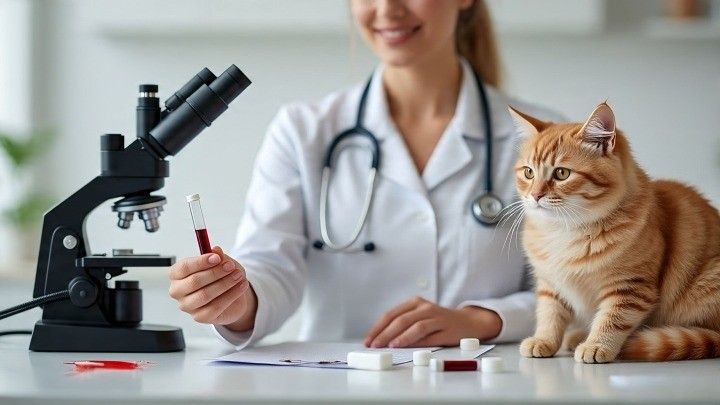
- Complete Blood Count (CBC): Measures red blood cell levels.
- Blood Smear: Checks for abnormal cells or parasites.
- Biochemistry & Urinalysis: Detects kidney, liver, or systemic diseases.
- Imaging: X-rays or ultrasound for hidden causes.
- Bone Marrow Tests: For non-regenerative anemia cases.
Normal Complete Blood Count Values In Dogs And Cats
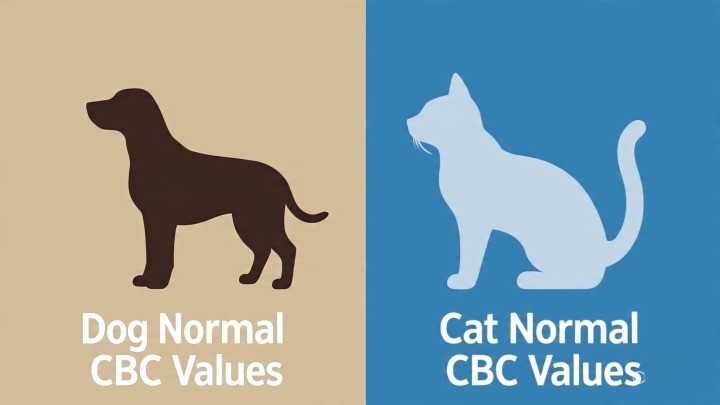
| Parameter | Normal Range (Dog) | Normal Range (Cat) | When Anemia Occurs |
|---|---|---|---|
| PCV (Packed Cell Volume / Hematocrit) | 37 – 55 % | 30 – 45 % | Decreased (often < 30% in dogs, < 25% in cats) |
| RBC Count (x10⁶/µL) | 5.5 – 8.5 | 5.0 – 10.0 | Reduced (fewer circulating red blood cells) |
| Hemoglobin (g/dL) | 12 – 18 | 8 – 15 | Decreased (reflects reduced oxygen-carrying capacity) |
| MCV (Mean Corpuscular Volume, fL) | 60 – 77 | 39 – 55 | May decrease (microcytic anemia), increase (macrocytic anemia), or remain normal |
| MCHC (Mean Corpuscular Hemoglobin Concentration, g/dL) | 32 – 36 | 30 – 36 | Decreased in hypochromic anemia |
| Reticulocyte Count | < 80,000/µL (non-regenerative state) | < 60,000/µL (non-regenerative state) | Increased in regenerative anemia, low in non-regenerative anemia |
Treatment Options
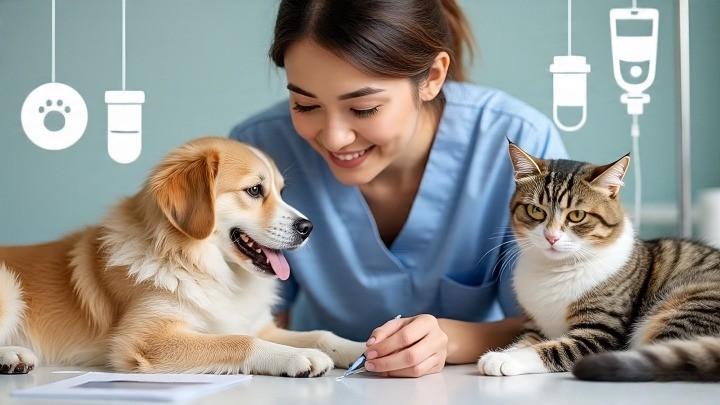
Emergency Care
- Blood transfusions for severe anemia.
- Oxygen therapy to stabilize breathing.
Medications
- Immunosuppressants for immune-related anemia.
- Antibiotics or dewormers for infections/parasites.
Nutritional Support
- Iron, B12, and folic acid supplements.
- Special veterinary diets.
Treating Underlying Causes
- Kidney support treatments.
- Parasite prevention.
- Cancer therapies if tumors are the root cause.
Home Care and Recovery
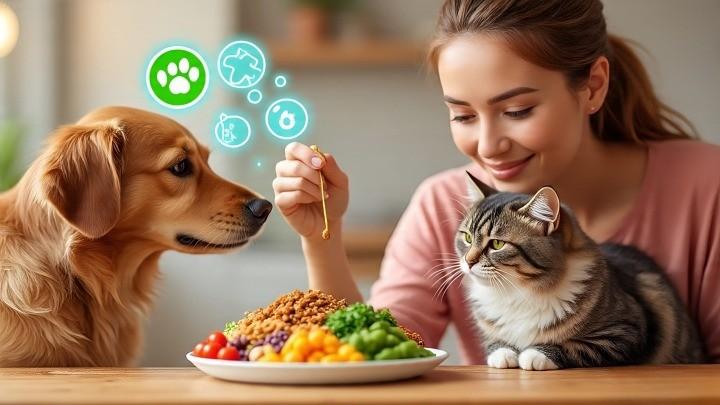
- Provide high-quality, balanced nutrition.
- Monitor energy levels, gum color, and breathing.
- Avoid strenuous exercise until your vet approves.
- Keep follow-up appointments for blood checks.
Prevention of Anemia in Pets
- Use year-round flea, tick, and worm preventives.
- Feed a balanced, vet-approved diet.
- Schedule routine check-ups and blood work.
- Vaccinate against preventable infections.
Complications if Left Untreated
- Organ failure due to low oxygen.
- Increased infections.
- Shortened lifespan.
Living with a Pet with Chronic Anemia
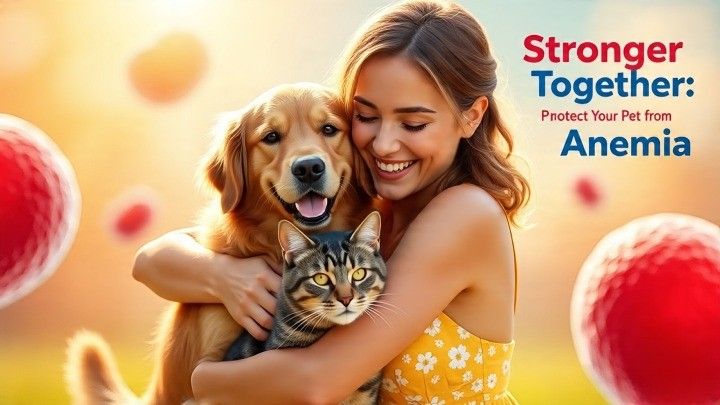
Some pets may never fully recover from anemia, especially if it’s linked to chronic kidney disease or cancer. With proper management, medication, and regular vet care, they can still live comfortably and happily.
Conclusion

This post considers the severity of every pet disease affecting anemia in cats and dogs; however, with timely medical intervention, caring, and proper treatment, most dogs and cats go on to live happy and fulfilling lives. In every test life throws at your animal, you have another chance to show him or her how deeply you care. It is the animals’ resilience that teaches us that hope is the brightest when the skies seem darkest. By staying informed and consulting veterinarians, you give your pet the strength to fight and the comfort of knowing they are not alone. Turning possession into triumph is our bond because love is the best cure.
FAQs
1. What is anemia in dogs and cats, and how does it happen?
Anemia in dogs and cats is when your pet has too few red blood cells or low hemoglobin, which carries oxygen. It happens from blood loss, cell destruction, or poor cell production. For example, a dog with fleas can develop anemia in dogs and cats from blood loss.
2. What are the common signs of anemia in dogs and cats?
Look for pale gums, tiredness, fast breathing, or loss of appetite. Severe anemia in dogs and cats might cause fainting or yellow skin. A cat I treated was super lethargic from flea-related anemia in dogs and cats.
3. What causes anemia in dogs and cats?
Causes include blood loss (e.g., injuries, parasites), hemolysis (toxins or immune issues), or chronic diseases like kidney failure. For instance, hookworms can trigger anemia in dogs and cats by sucking blood from the gut.
4. How do vets diagnose anemia in dogs and cats?
Vets use a complete blood count (CBC) to check red cell levels and reticulocytes. Blood smears or X-rays might pinpoint causes. A puppy’s CBC once showed anemia in dogs and cats from heavy flea infestation.
5. Can anemia in dogs and cats be treated?
Yes, treatment depends on the cause—transfusions for blood loss, steroids for immune issues, or supplements for deficiencies. A dog with immune-mediated anemia in dogs and cats recovered with steroids in my clinic.
6. Is anemia in dogs and cats dangerous if untreated?
Untreated anemia in dogs and cats can lead to organ damage or infections from low oxygen. A cat ignored for too long had heart strain from severe anemia in dogs and cats.
7. Are certain breeds more prone to anemia in dogs and cats?
Yes, breeds like Cocker Spaniels (dogs) or Abyssinians (cats) are at risk due to genetic issues. For example, a Cocker Spaniel had immune-related anemia in dogs and cats in my practice.
8. How can I prevent anemia in dogs and cats?
Use flea/tick preventives, feed balanced diets, and get regular vet check-ups. A good diet stopped nutritional anemia in dogs and cats for a client’s kitten.
9. What’s the difference between regenerative and non-regenerative anemia in dogs and cats?
Regenerative means the body makes new red cells (e.g., after blood loss); non-regenerative means it can’t (e.g., kidney disease). A dog with ticks had regenerative anemia in dogs and cats, unlike a cat with chronic kidney issues.
10. Can diet help with anemia in dogs and cats?
Absolutely, foods rich in iron or B vitamins support red cell production. I recommended a vet-approved diet for a dog recovering from nutritional anemia in dogs and cats, and it worked wonders.
